Wondering how to plate your freshly made risotto? Look no further. As a staple in Italian cuisine, risotto has its etiquette in presentation and accompaniments.
Based on tradition, etiquette, and practicality, here’s why serving risotto on a flat plate is preferred:
- Highlighting the Grain: A flat plate beautifully showcases the risotto’s grain texture, emphasizing the creaminess and the aroma of its ingredients.
- Quick Heat Dissipation: Risotto on a flat plate cools more rapidly, ensuring it’s at the perfect temperature when you’re ready to dive in with your fork. Yes, wondering whether to eat risotto with a fork or spoon? A fork is your go-to here.
- Avoid Overcooking: A deep dish, such as a bowl, might push the rice to the bottom, where it continues cooking, potentially ruining the desired texture.
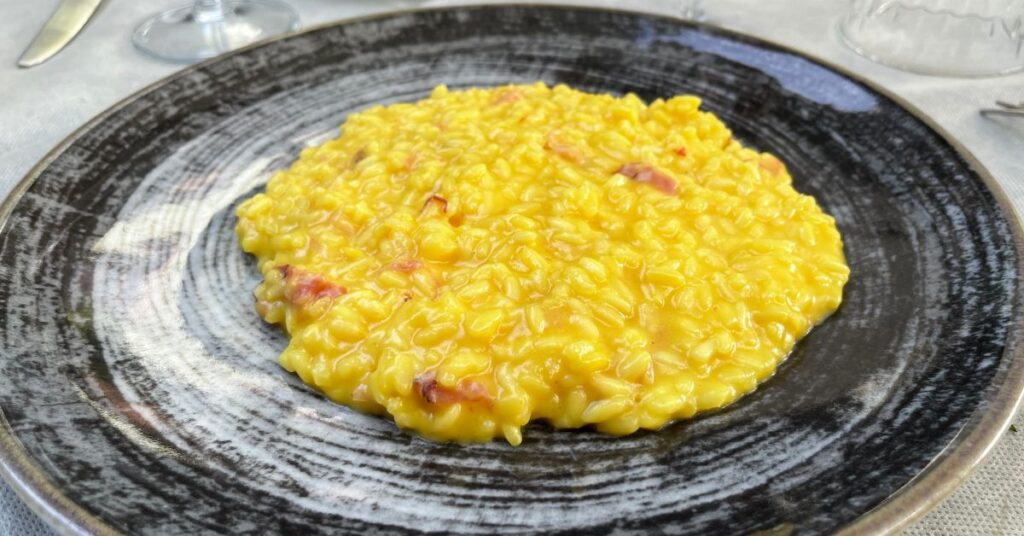
Despite these points, it’s worth noting that some chefs do serve risotto in bowls.
Understanding the texture of risotto is vital. It’s neither like pasta nor soup, giving it the versatility to be served in various dishes. However, the question “risotto plating: bowl or plate?” often pops up, leading to a myriad of opinions, and arguments or personal disputes between the chefs.
Serving and Pairing Risotto the Italian Way: What Comes Alongside?
In Italy, risotto is often celebrated as a standalone dish (it’s never an appetizer), especially when it’s seasoned with robust flavors from meat, cheese, or fish sauces like risotto with crabs. However, there are occasions, albeit rare, when risotto might share its plate with another delicacy, like the classic pairing of risotto Milanese and osso buco.
When considering what to serve with risotto as a subsequent course, Italians often lean towards a meat or fish dish. But remember, given the heartiness and richness of many risotto preparations, it’s not uncommon for it to be the main and sole attraction of an Italian meal.
The beauty of risotto lies in its adaptability, making it fit seamlessly into various meal structures, be it a singular main dish or part of a multi-course feast.
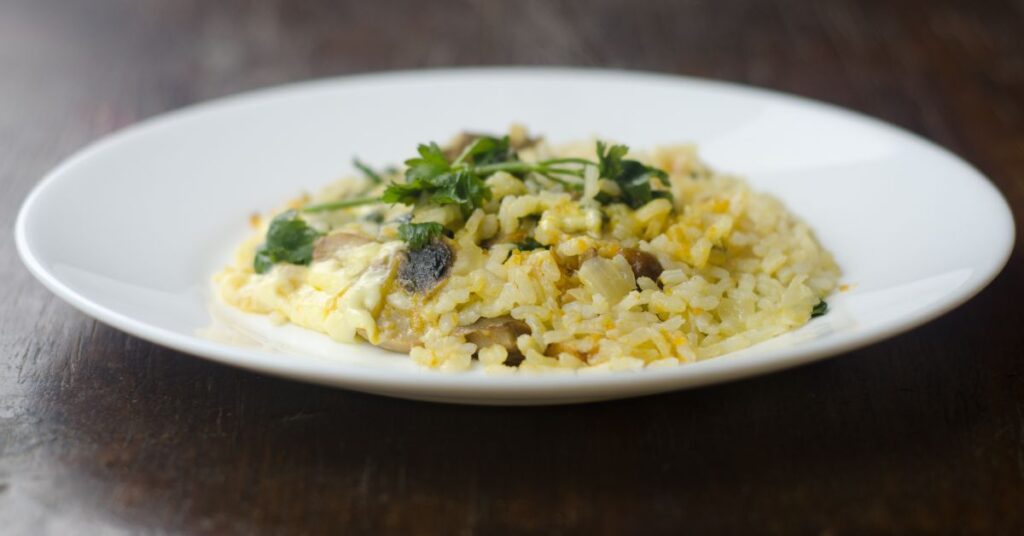
Plating Risotto
<strong>How to Plate Risotto the Italian Way (also How to Eat Risotto)</strong>
Total Time: 5 minutes
Choose the Right Dish
To serve risotto as it’s done in Italy, make sure you have a flat plate.
Plating Risotto
Using a ladle, pour the hot risotto into the center of the plate and let it naturally spread from the center towards the edges.
The “Tapping” Trick
After pouring the risotto, give the bottom of the plate a few light taps with the palm of your hand. This helps the risotto spread out evenly and achieve the classic circular presentation on the plate.
Eating the Risotto
Grab a fork (no spoons allowed!) and start eating from the outer edge of the plate, where the risotto cools down faster.
Savor It slowly
Relish every bite, enjoying the creaminess and flavors of the risotto prepared in traditional Italian style.
Related questions
How should risotto be served?
Risotto should be served on a flat plate so that it will cool more quickly and thereby allow you to eat it without burning your mouth. It should be eaten with a fork and not a spoon.
How do you plate risotto?
To plate risotto nicely, place a small ladle of risotto on a flat plate and let it flatten on the surface. You can help by tapping the area underneath the plate with the palm of your hand. This will make the rice spread out over the entire surface. Now you can garnish the surface of the dish or the rim with ingredients of your choice.
Is risotto a stand-alone dish?
Risotto is a typical first course in Italian cuisine, eaten after the antipasto and before the main course. It originated in northern Italy, particularly Lombardy, Veneto, and Piedmont, and then spread in numerous versions throughout the country.
Is risotto a lunch or dinner course?
Because risotto is the first course, it can be eaten at either lunch or dinner. Just like pasta, it is not a specific first course and can be served at either a quick business lunch or a full dinner at a restaurant, always as a first course.
Do you eat risotto with a spoon or fork?
In traditional Italian dining, risotto is eaten with a fork to enjoy its creamy texture and individual grains. Using a spoon is not the typical practice.

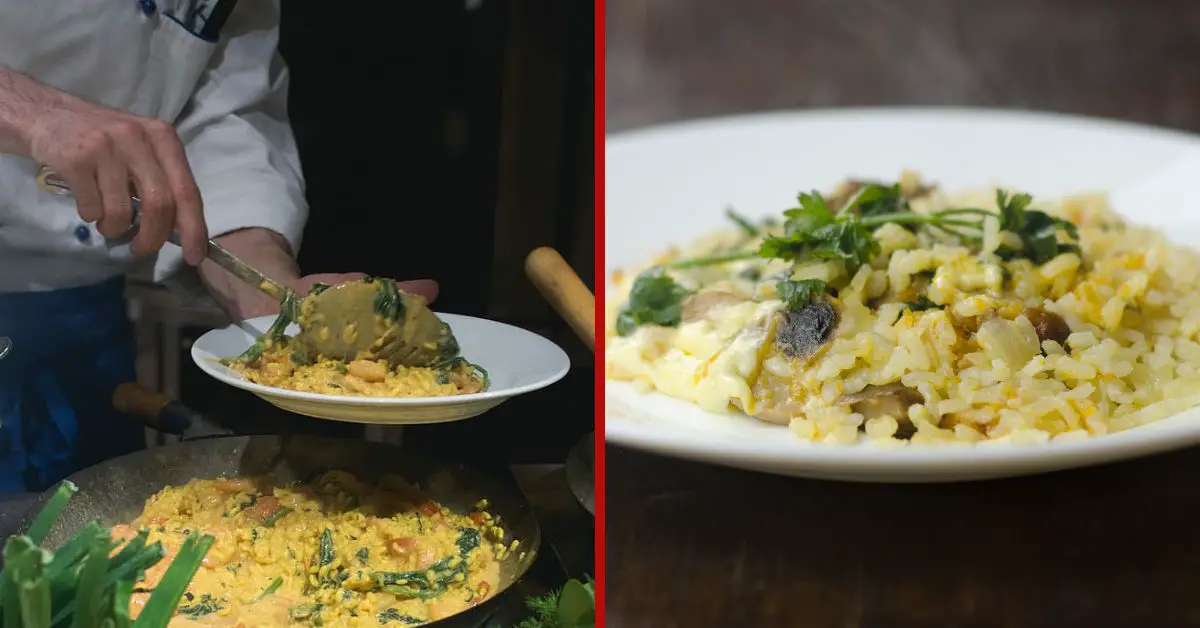
![Do Italians cook with Olive Oil or Extra Virgin? [+ how to identify EVOO]](https://whyitalians.com/wp-content/uploads/2022/11/extra-virgin-olive-oil-bottles-768x402.jpg)
![Do Italians put Olive Oil in Pasta Water? [Stop wasting it]](https://whyitalians.com/wp-content/uploads/2022/07/spaghetti-in-pasta-water-768x402.jpg)
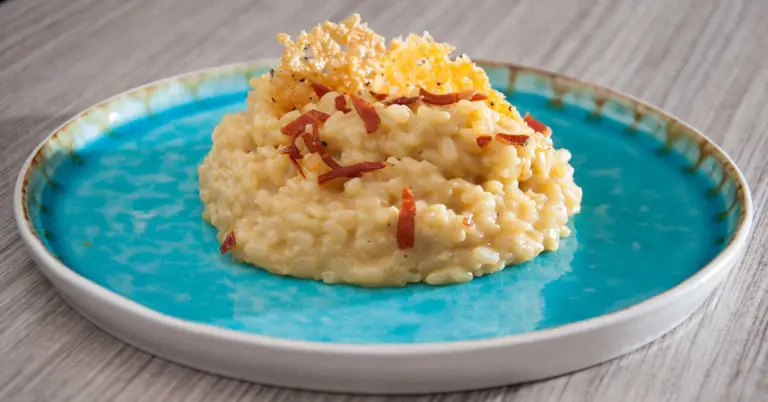

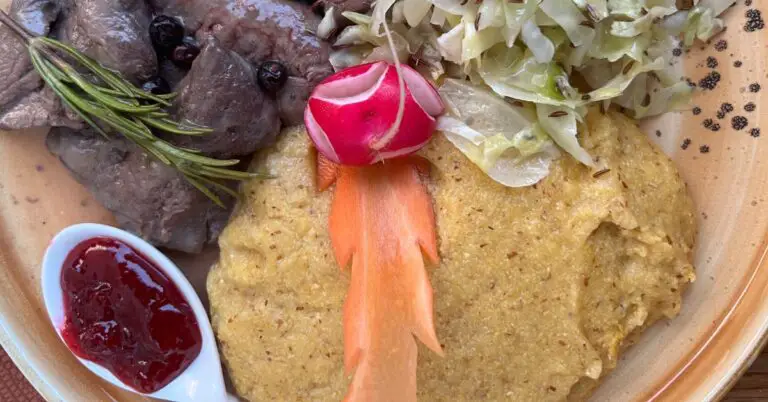
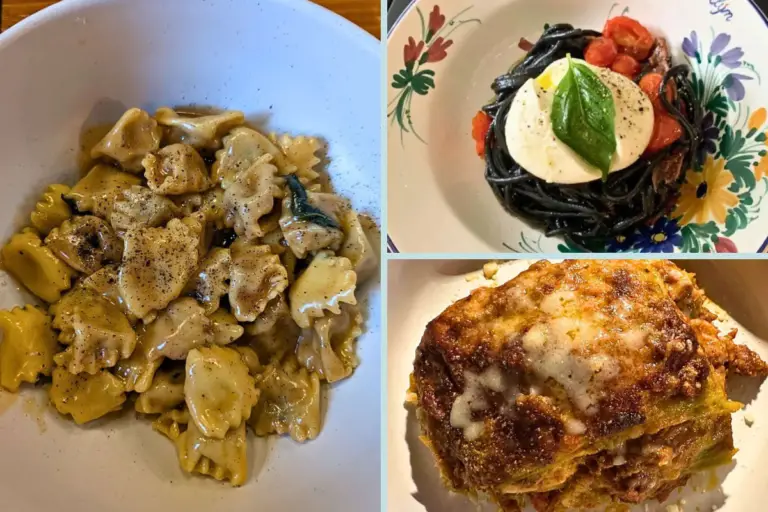
Thanks.
Grazie.